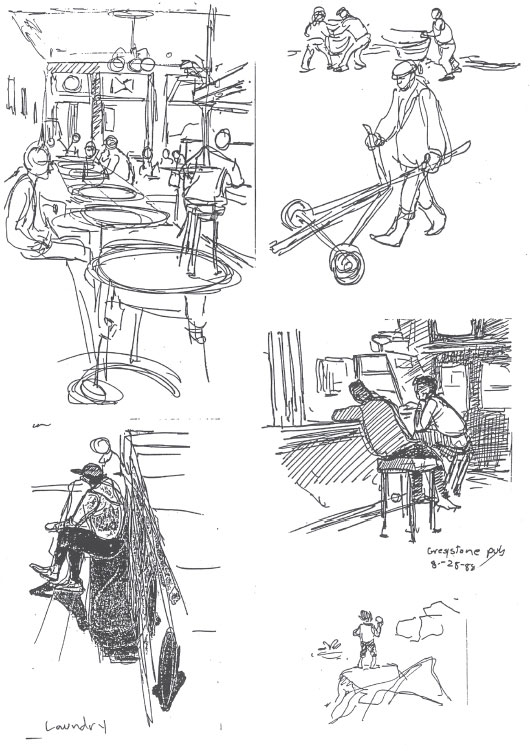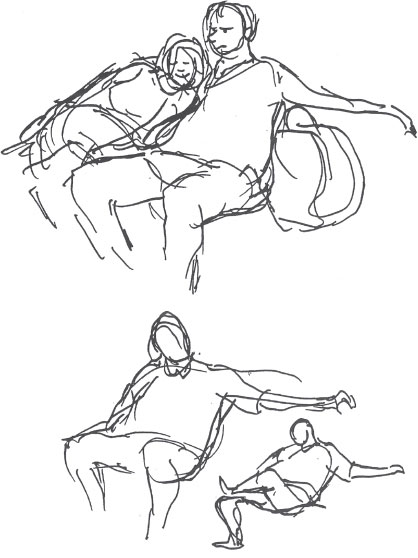Body language is vital to animation. The uses of body language in visual communication ranges from subtle eye movements to great sweeping bodily gesticulations. Each of these movements has meaning and has been developed to a high degree of spontaneous understanding between people of like cultures.
There are some non-verbal messages that are “universal.” These are basic human emotions such as joy, sorrow, anger, tenderness, submission, domination, fear, surprise, distress, disgust, contempt, and shame. It seems these emotions are tied in with the physiological structure of humans. Some scientists (who study kinetics) believe that the brains of all humans are programmed to react bodily in a similar fashion to these emotions.
Other forms of body language are either learned by copying, or by strict codes or rules devised by individual cultures. Often these gestures are the exact opposite from those of other cultures. For instance, nodding the head is our Western culture’s non-verbal way of saying yes. There are societies in India, however, where a nod of the head means no.
Messages of the body are used to establish one’s “space,” of which there are many kinds — personal, social, public, territorial, etc. Body language is used to reveal one’s social position, one’s attitude, and one’s needs; also there are gestures of love, friendship, and hatred. Gestures are used to create an “image” of self as honest (watch the candidates on TV), sexy, or physical or caring, etc. The kinds of gestures and their uses are practically limitless. Every gesture we make or contrive is used to explain our thoughts or actions and the degree to which we display the movements establishes our character as extrovert or introvert, aggressive or passive, thoughtful or insensitive, comical or tragic.
In animation, of course, the story and its characters dictate the types of gestures needed. In most cases whatever the character, caricaturing the action is necessary to “punch” the business. Caricature is the animators means of making sure there is no doubt in the viewer’s mind what is being portrayed. John Lounsbery animated what he thought was a cute Italian gesture for Tony, the waiter, in Lady and The Tramp. The director, Geronimi, knowledgeable in Italian matters, suggested he change it because it happened to be an obscene gesture.
Poetry can, for instance, be nebulous and suggestive in order to evoke personal images in the mind of the reader, but a cartoon has to “read” in an instant with no need for retrogression. In a film, everything unfolds at 24 frames a second and all must be “spelled out” so everyone arrives at the ending at the same time and with the same conclusion. Gestures that “ring true” are needed to attain that goal. Practice, observation, constant sketching, “osmosis,” and even emulation of the Disney masters past and present should be among your daily pursuits. Drawing gestures is like using body language — it requires the context of an entire situation (story) to be thoroughly meaningful.
We learn drawing by studying parts; we practice drawing by assembling those parts into a meaningful whole.
Here are some drawings from Joe Ranft’s sketchbook, done recently on a trip to Australia. They are what I call “unselfconscious” gesture drawings. As you study them you will see that there was no attempt to impose upon them any more than that they record some activity (body language) in its most direct and simplest form. In every drawing he seems to fuse the gesture into the context of the situation he has chosen to draw.
(Incidentally, this “handout” was triggered by reading the book, Body Language by Julius Fast.)


